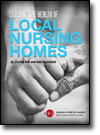Tag
gao
-
•
New GAO report reveals trends in coverage, use of dental services
In 2011, 4 million children did not obtain needed dental care because their families could not afford it, according to…

-
GAO reports give journalists a starting place for local assessments
Ready or not, here they come – maybe. The Government Accountability Office has released two lengthy reports (and handy one-page summaries)…

-
•
GAO evaluates FDA’s overseas inspectors
A couple of new GAO reports are seeking to shed some light on the FDA’s overseas regulatory efforts. The first…

-
•
GAO examines competition in hospital purchasing
Group purchasing organizations are intermediaries which theoretically group hospitals together to give them more leverage in purchasing negotiations. In 2009,…

-
•
GAO sting spotlights sketchy herbal meds
Undercover sting operation reports may not be the meatiest documents released by the Government Accountability Office, but they’re almost always…

-
•
GAO: FDA designation doesn’t ensure safety
Ammonium Hydroxide and Phosphoric Acid, both GRAS. Photo by Benny BNut via Flickr. On his blog Cold Truth (and on…

-
•
Is U.S. ready for Haiti-style mass casualty event?
The GAO’s latest release, “State Efforts to Plan for Medical Surge Could Benefit from Shared Guidance for Allocating Scarce Medical…

-
•
GAO looks at ‘extraordinary’ drug price hikes
In a new report (pdf), the Government Accountability Office looks into what caused hundreds of extraordinary increases in prescription drug…

-
•
GAO looks into why nursing home evals are flawed
The Government Accountability Office has followed up its May 2008 report that found a high level of inconsistency in nursing…

-
•
GAO: Flu-fighting plan needs better measures
The United States Government Accountability Office today released the catchily titled “Monitoring and Assessing the Status of the National Pandemic…


